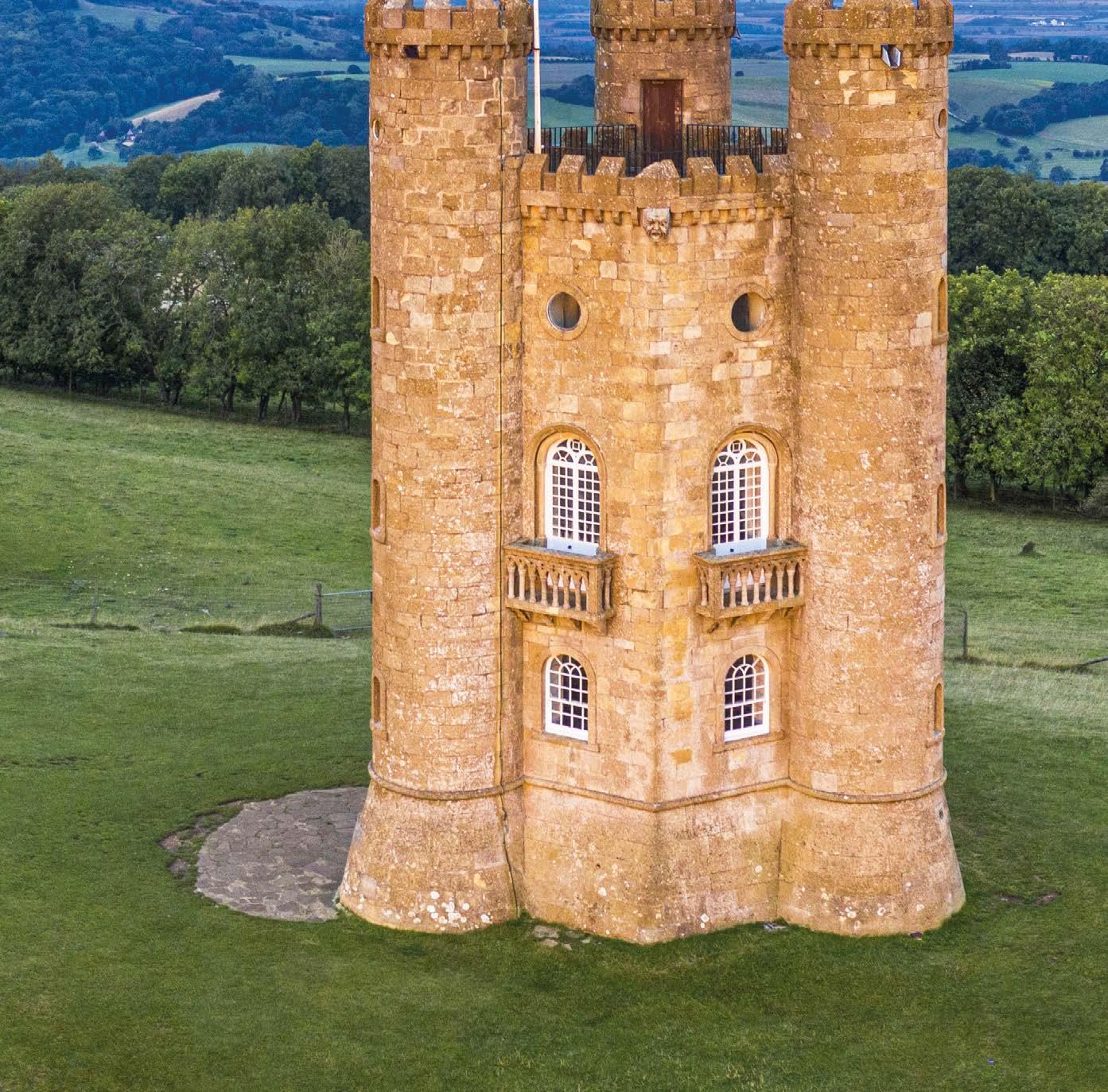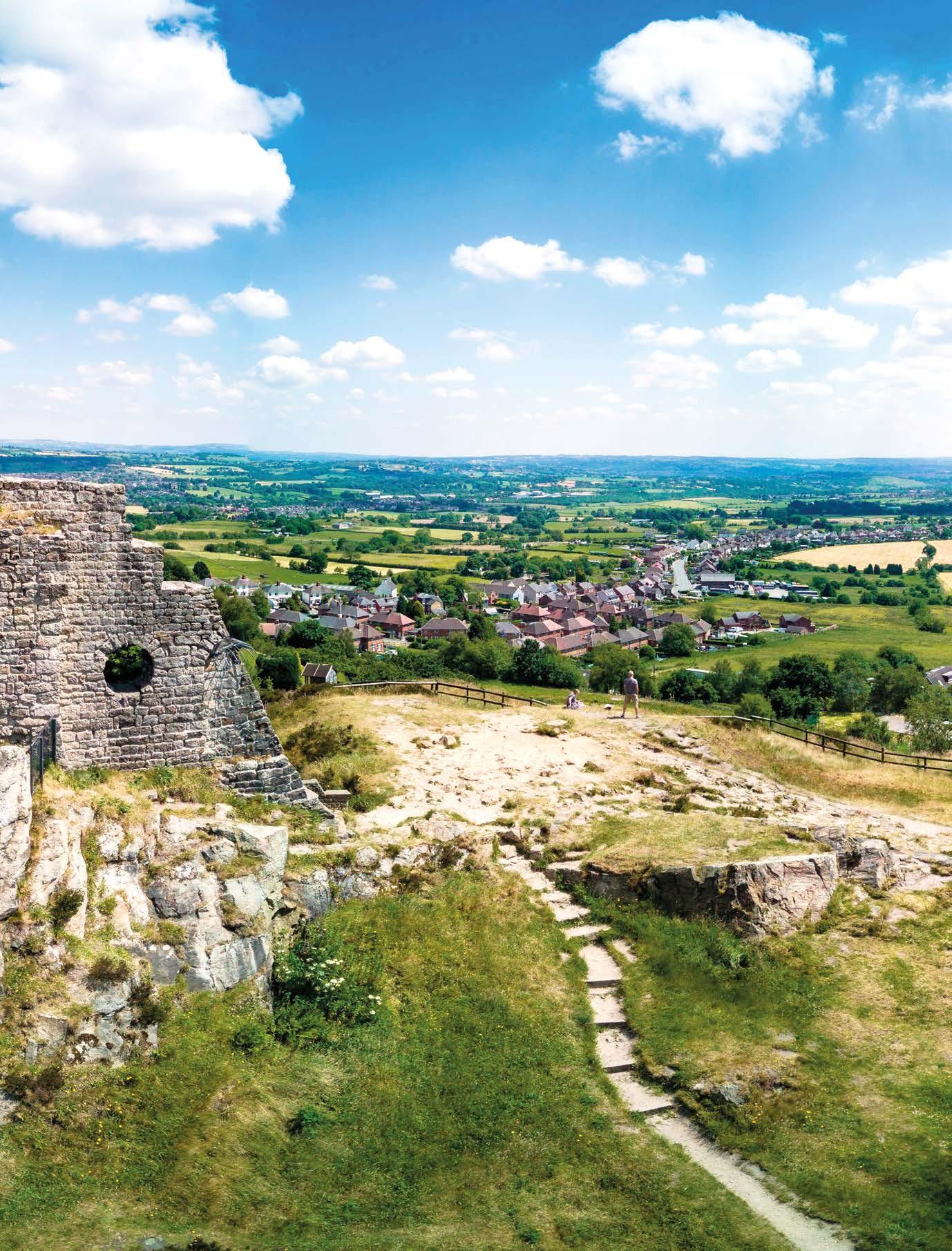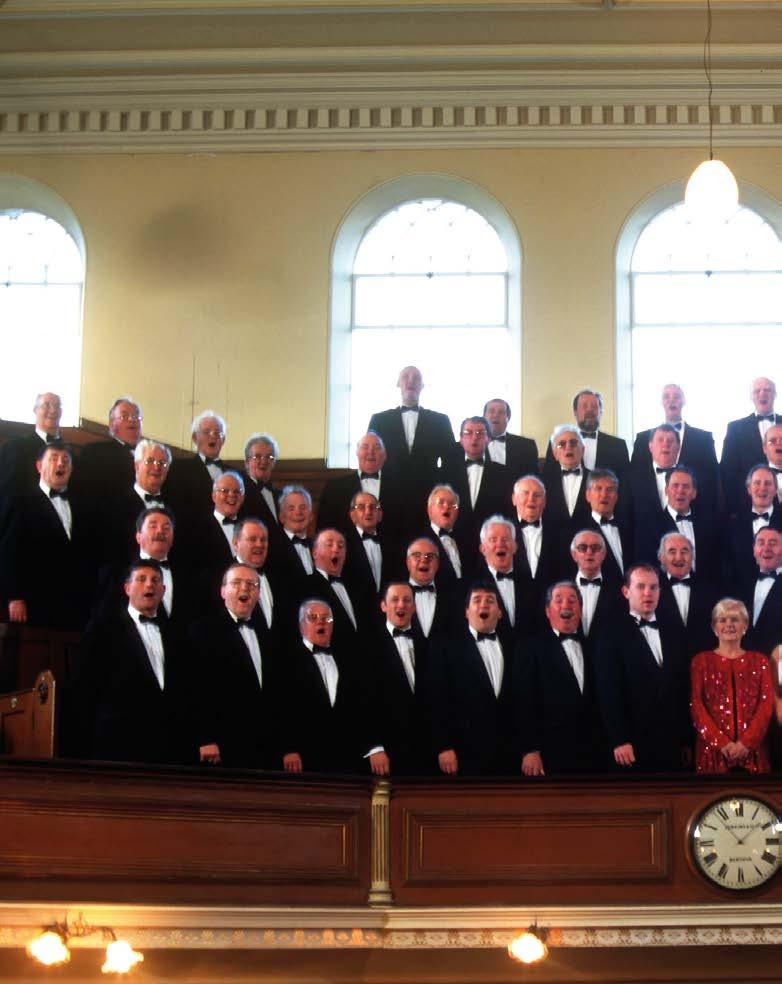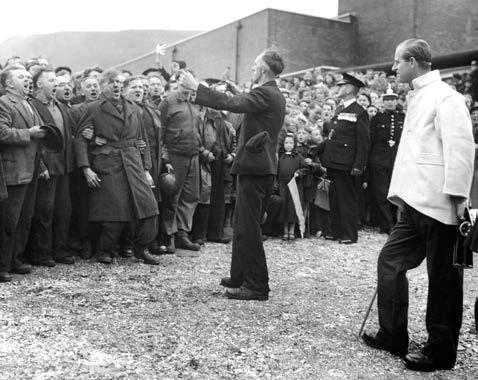





























































Renowned for their honeyhued villages and rolling hills, the North Cotswolds are pastoral perfection






From

In September 2022, the United Kingdom was rocked by the passing of its longest serving monarch. Most people had never known life without Queen Elizabeth II, and mourning was both deep and heartfelt. As Britain adjusts to a new king, Charles III himself must come to terms with a new life. We do not yet know which royal palaces will become most associated with him, but it is certain that some of His Majesty’s current houses will remain much loved and visited.
Buckingham Palace was owned by royalty before it became the monarch’s of cial London residence. James I planted a mulberry plantation there, in an ill-fated attempt to start an English silk industry, but his son Charles I gave the estate away when the project failed. It passed through many hands until John Shef eld, Duke of Buckingham,
Previous page:
Highgrove House is King Charles' Cotswolds home
This page, above: The White Drawing Room at Buckingham Palace is used for small audiences with the monarch, who enters the room via a hidden door disguised as a mirror

demolished the old manor in the early 18th century for a brand new ‘Buckingham House’.
In 1762 King George III re-acquired the estate for his wife Queen Charlotte, but the of cial royal court remained at St James’s Palace next door. The Queen had the place remodelled, including some magni cent Robert Adam ceilings, but it was not good enough for her son. George IV commanded John Nash to turn his mother’s house into an enormous, U-shaped palace. Nash rebuilt extensively, enclosing a stunning forecourt and installing a triumphal arch to celebrate Britain’s recent victories. Nash’s vision broke the budget and after George’s death he was dismissed. William IV preferred Clarence House, and even offered Buckingham Palace as a substitute Houses of Parliament after re destroyed Westminster Palace in 1834.







With ancient castles, majestic stately homes and a world-famous reputation as the home of the Potteries, the county of Staffordshire is rich in history and heritage
 PHOTO:
© ALAMY/MATT
JESSOP
WORDS CATHERINE JONES
PHOTO:
© ALAMY/MATT
JESSOP
WORDS CATHERINE JONES


were forged in the white heat of industrialisation, and of the nonconformist revival of the early 1900s, with its emphasis on participatory singing.
The Temperance Movement, too, played its part, luring men from the tavern to eisteddfods, competitive festivals of music and poetry, such as that at Llangollen in 1858, which rekindled interest in traditional Welsh airs. Those were often bitterly rivalrous affairs, attended by thousands, and sometimes descending into brawls. “Next after a football match Welshmen enjoy a choral ght,” commented the Musical Times in 1897, quoted by social historian Professor Gavin Williams in Do You Hear the People Sing? The Male Voice Choirs of Wales (Gomer Press).
By 1851, Wales employed more workers in industry than in agriculture, qualifying it as the world’s rst industrial society. But boom time for the coal barons, ironmasters and quarry owners were hard times for the coal miners, foundry workers and quarrymen who were the muscle and backbone of early choirs.
With mass layoffs and struggle in the 1920s and 1930s, choirs gave unemployed men a sense of dignity and purpose, as well as a means of raising money. In the pit village of Tylorstown, for example, in 1924, with men left idle by strikes and lockouts, miners gathered in the vestry of the Ebenezer Chapel for a rst rehearsal of the Pendyrus Male Choir, the Rhondda Valley’s oldest established choral organisation. In 1965, Pendyrus was the rst Welsh choir to promote a concert in the Royal Albert Hall. That year it made its rst overseas tour, to Western Canada and the USA, and it counts Professor Williams as a member today. What a testament it is that out of poverty, suffering and exploitation there emerged something so life-af rming and enduring. “With every bre of their being, they would commit to a sound that was both powerful and virile but yet moving and beautiful,” writes Tim Rhys-Evans in a foreword to Do You Hear the People Sing? “Men who mostly did impossible physical jobs underground and who would never have expressed their emotions in words felt no embarrassment in standing in front of hundreds of people

Clockwise from above: The Dowlais Male Choir performing in Merthyr Tydfil; programmes from male voice choir festivals at the iconic Royal Albert Hall; Only Boys Aloud; a miners' choir giving an impromptu performance for the Duke of Edinburgh during a visit to the Rhondda Valley, 1955

Eistedfodds, competititive festivals of music and poetry, were often bitterly rivalrous affairs, sometimes descending into brawls
and singing of their love, faith, joy and pain.”
A son of Tredegar – birthplace of the Welsh Labour Party politician Aneurin Bevan, and of the Orpheus Male Voice Choir – Mr Rhys-Evans is best known as the founder of Only Men Aloud, and of its scion, Only Boys Aloud (‘the biggest boy band in the world’). Formed in 2010 for youths aged 14 to 19, the ensemble won third place on Britain’s Got Talent in 2012, challenging the stereotype of Welsh choirs as just so many old men in blazers.

Generations of miners faced daily the risks of collapse and explosion, in toil that wrecked their health. Today’s youngsters confront no such dangers, but, in a socially atomised world, they face more insidious challenges. For Rhys-Evans, Only Boys Aloud was never an end in itself, but “a platform for something much bigger”, instilling a sense of worth and belonging. “We help the boys realise they are each a fundamental part of a big thing,” he says, “and without each cog being hard-working the machine doesn’t run as well.”
Reports of the imminent demise of the Welsh male voice choir are clearly exaggerated. “It has its ups and downs,” says Chris Evans, general secretary of the Welsh Association of Male Choirs, which represents more than a hundred member choirs, including 11 based outside of Wales. A few choirs did not survive Covid, but others go from strength to strength.


The demographics have changed, with more white-collar workers signing up. And while some clubs are content with the old ways, others actively recruit among young people, with, for instance, advertisements promising health bene ts, new friends and a chance to learn to sing.
“You have to move with the times,” says Chris, adding that the focus on competition has shifted to charity, and that the repertoire has been updated for a modern audience, with fewer chapel hymns and old ballads, and with orchestral musical accompaniments, not just the old mission hall piano.

For those wanting to experience the heart-stirring sound of a Welsh choir in full voice (but who nd themselves far from Wales), Chris recommends seeking out the contemporary composition Anfonaf Angel (Guardian Angel) by Robat Arwyn. A clip of the song being performed by massed choirs in the iconic Royal Albert Hall at the 26th London Welsh Festival of Male Voice Choirs in 2018 can be found on YouTube. Every bit as stirring as Myfanwy, it should give you not just goosebumps but at least an intimation of the elusive hywl and hiraeth, which maybe the Welsh alone can truly understand.

The Welsh male voice choir is one of the country’s most treasured traditions, which has forged the national identity like no other, but what is its future?
WORDS ROSE SHEPHERDIs there any sweeter music to the ears than Joseph Parry’s elegiac Myfanwy, when sung by a Welsh male voice choir? A staple of the choirs’ repertoire, it tells of a penniless young poet’s forlorn love for a beautiful noblewoman. But it is not the words so much as the beauty of the harmony, and the hywl and hiraeth of the delivery (roughly translated as yearning and spirit, though for Welsh speakers, the words have layers of meaning), that send shivers down the spine.

Male voice choirs are one of the great glories of the land of song. They sing at rugby matches, weddings, funerals and festivals, at eisteddfods and miners’ galas, in pubs, shire halls, school halls, the Royal Albert Hall, Carnegie
Left to right:
A Welsh male voice choir on stage at a festival in Portmeirion, North Wales; a choir practicing on the seafront at Porthcawl during the miners' eisteddfod in 1974
Hall… They sing for charity, community, comradeship, for love of their language, their culture, their country and for the pure joy of the human voice, speaking unmediated to the human heart.
No one could but weep, in 2016, when choirs sang
Male voice choirs sing for the love of their country and for the pure joy of the human voice, speaking unmediated to the human heart